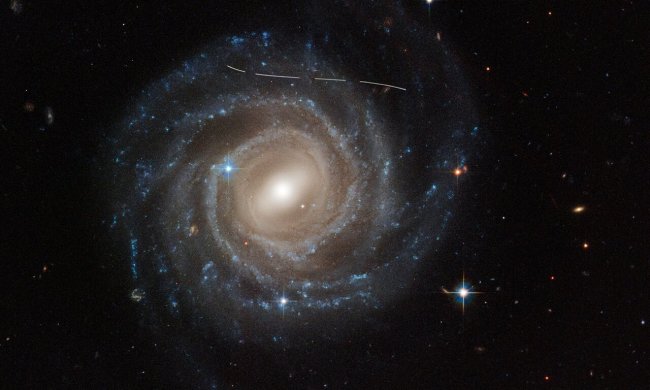A recently released image taken by the Hubble Space Telescope shows a distant galaxy that has been warped and distorted by a phenomenon called gravitational lensing. This phenomenon allows scientists to infer information about very distant objects and is used in the discovery of exoplanets.
The galaxy pictured is called LRG-3-817 and is also known as SDSS J090122.37+181432.3. If you look just to the left of the center of the image, you can see what looks like a smudge in an arc shape. This is the gravitational lensing effect.

Gravitational lensing occurs when a telescope like Hubble is pointed at a distant target like this galaxy, and a large object such as a cluster of galaxies passes between the telescope and its target. The gravity of this intermediate object bends the light coming from the distant object and acts like a magnifying glass, temporarily making the light from the distant object brighter.
The effect might look like a mistake or a distortion in the data, but in fact, it’s an incredibly useful phenomenon. As the Hubble scientists write, “Strong gravitational lenses provide an opportunity for studying properties of distant galaxies, since Hubble can resolve details within the multiple arcs that are one of the main results of gravitational lensing. An important consequence of lensing distortion is magnification, allowing us to observe objects that would otherwise be too far away and too faint to be seen. Hubble makes use of this magnification effect to study objects beyond the sensitivity of its 2.4-meter-diameter (almost 8-foot) primary mirror, showing us the most distant galaxies humanity has ever encountered.”
This means that researchers can more easily study distant galaxies, as they are normally very faint but when they are lensed they become brighter. This same technique can be used on a smaller scale in a process called gravitational microlensing, which is used to identify exoplanets. When an exoplanet is in orbit around a star that passes in front of another star, it can affect the brightness of the distant star. By observing the fluctuations in brightness researchers can spot the exoplanet and infer information about it like its mass.



